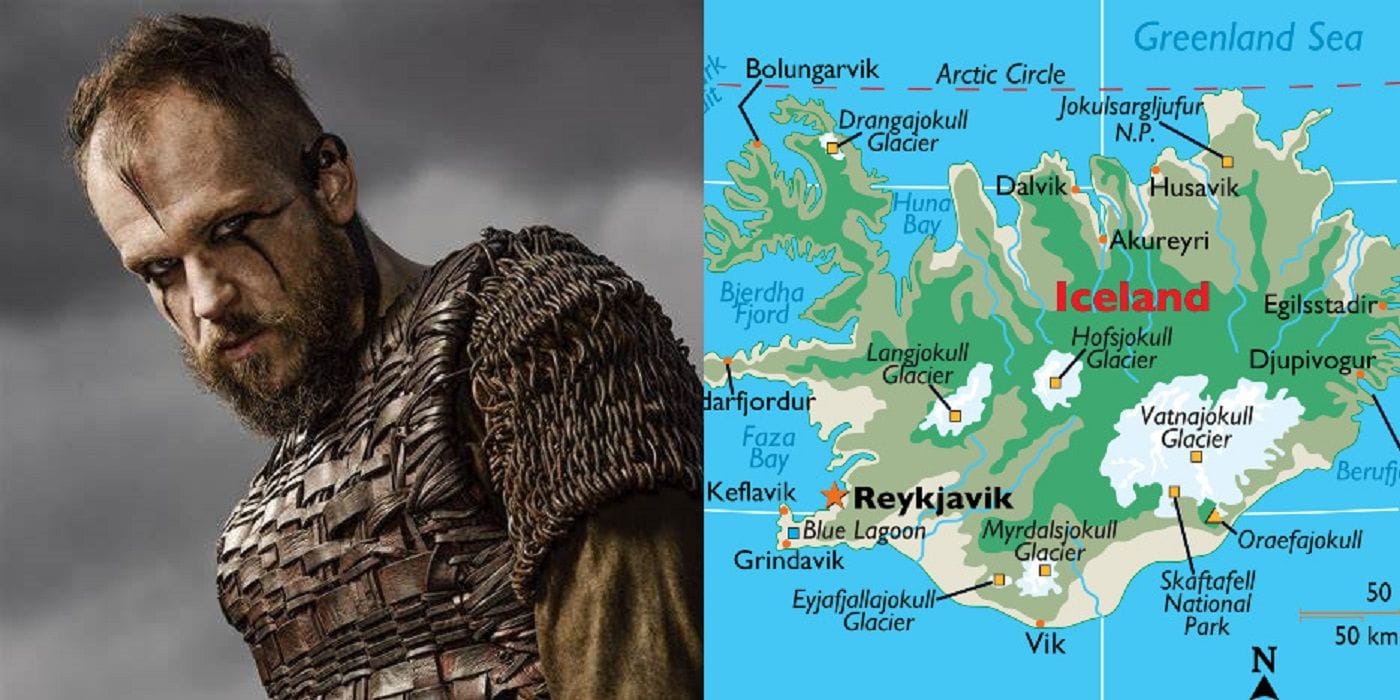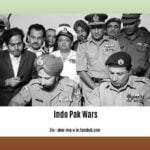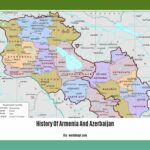Why Were They Called “World Wars”?
The term “World War” evokes a sense of dread and for good reason. It signifies conflicts of unimaginable scale and devastation, impacting not just armies but reshaping societies, technology, and the global map. These weren’t mere wars; they were cataclysmic events that continue to shape our world.
But what elevates a war to a “World War”? Essentially, it’s when a conflict draws in most of the world’s major powers, and its consequences ripple across every facet of life— economics, politics, and even our everyday experiences. History has witnessed this twice: World War I (1914-1918) and World War II (1939-1945).
World War I: The “Great War”
- The Spark: Europe in the early 1900s was a powder keg of simmering tensions. Nationalism, imperial ambitions, and a complex web of alliances created a volatile environment. The assassination of Archduke Franz Ferdinand of Austria-Hungary on June 28, 1914, provided the spark that ignited the conflict.
- The Belligerents: The Allied Powers, led by Great Britain, France, and Russia (joined later by the United States), faced off against the Central Powers, primarily Germany, Austria-Hungary, and the Ottoman Empire.
- The Aftermath: The Allied Powers secured victory, but at a tremendous cost. Millions perished, empires crumbled (including the Austro-Hungarian, Ottoman, and Russian Empires), and the world map was redrawn. The war also triggered profound social and economic shifts, such as expanded roles for women who sustained societies while men were on the front lines.
World War II: The “Second World War”
- The Seeds of Conflict: Many historians argue that World War II stemmed from the unresolved issues of World War I. The Treaty of Versailles, intended to ensure peace, instead fueled resentment and instability, particularly in Germany. This, combined with the rise of fascist ideologies and a failure of global powers to curb aggression, set the stage for another world war.
- The Combatants: The Allied forces, spearheaded by Great Britain, the United States, the Soviet Union, and others, confronted the Axis Powers, consisting of Germany, Italy, and Japan.
- The Aftermath: The Allied victory brought immense relief, but the war’s impact was profound and devastating. The Holocaust, the genocide perpetrated by Nazi Germany against Jews and other minorities, left an indelible scar on history. While the war led to the creation of the United Nations, aiming to prevent future conflicts, it also marked the beginning of the Cold War, a period of intense rivalry between the United States and the Soviet Union.
When Were World Wars 1 and 2 Fought?
The World Wars weren’t mere chapters in history books; they were seismic events that redefined the 20th century, each leaving its own unique mark on the world. Understanding their chronology is essential to grasping their lasting impacts.
World War I (1914-1918): The “War to End All Wars”
Imagine a seemingly ordinary summer day—July 28, 1914. Life across Europe carried on as usual. Then, the unthinkable happened—the assassination of Archduke Franz Ferdinand, heir to the Austro-Hungarian throne. This single event set off a chain reaction, pulling the major powers into a conflict they believed would be swift. They were tragically mistaken. Four long years of brutal trench warfare, the emergence of horrifying new weapons like poison gas, and the loss of millions of lives marked this unprecedented conflict.
World War II (1939-1945): A World Engulfed in Conflict
Despite the devastation of World War I, the hope for lasting peace proved tragically fleeting. Just over two decades later, on September 1st, 1939, the world descended into another global conflict. Nazi Germany, led by Adolf Hitler, invaded Poland, shattering any illusions of peace. This time, the war spanned continents, with battles raging from the deserts of North Africa to the islands of the Pacific. World War II reached a level of devastation never before imagined, marked by the horrors of the Holocaust and the use of atomic bombs.
Key Takeaways:
- World War I: July 28, 1914 – November 11, 1918. Sparked by the assassination of Archduke Franz Ferdinand and a complex web of alliances.
- World War II: September 1, 1939 – September 2, 1945. A consequence of the unresolved tensions of World War I, the rise of totalitarian regimes, and the failure of diplomacy.
The World Wars are stark reminders of the human cost of conflict and the importance of striving for peace. Understanding their timelines provides a framework for analyzing their profound and enduring impacts.
Has World War III Happened?
The notion of a third World War evokes immense anxiety, reflecting the fear of global conflict ingrained in our collective consciousness. However, World War III, in the sense of a clearly defined global conflict mirroring the scale and impact of World War I or II, has not occurred. You won’t find it on a historical timeline because it never officially transpired.
However, the term “World War III” is often used rhetorically to describe periods of extreme global tension. The Cold War (1947-1991), for example, with its nuclear standoff and proxy wars, often evokes the specter of “WWIII.” Similarly, periods like the Cuban Missile Crisis (1962) brought the world to the brink of nuclear war, intensifying fears of a global conflict.
The Evolving Nature of Warfare and Future Concerns
While a traditional world war on the scale of the 20th century hasn’t occurred, the threat of large-scale conflict remains a significant concern. The nature of warfare itself has undergone a transformation, making it more complex and potentially even more devastating:
- Cyberwarfare: Nation-states and non-state actors can now engage in conflict and espionage in the digital realm, potentially disrupting critical infrastructure and sowing chaos.
- Asymmetric Warfare: The rise of non-state actors like terrorist organizations using unconventional tactics presents new challenges to global security.
- Nuclear Proliferation: The increasing availability of nuclear weapons technology raises the possibility of more actors possessing these devastating weapons, escalating the risk of nuclear conflict.
While we haven’t experienced an official “World War III”, the potential for future conflicts, potentially more devastating than those of the past, remains a real concern. Global cooperation, diplomacy, and efforts to mitigate new threats are crucial to averting future disasters.
What Led to World War II?
The outbreak of World War II is often attributed to Germany’s invasion of Poland on September 1, 1939. While this event marked the war’s official commencement, it was the culmination of a series of events, simmering tensions, and failed diplomacy that set the stage for global conflict.
The Treaty of Versailles: A Flawed Peace?
One of the most significant factors contributing to World War II was the Treaty of Versailles, the peace agreement that concluded World War I. While intended to prevent future wars, the treaty, in many ways, laid the groundwork for another devastating conflict.
- Harsh Punishments for Germany: The treaty placed the blame for World War I squarely on Germany, imposing crippling reparations payments, territorial losses, and restrictions on its military. These conditions caused widespread resentment and economic hardship in Germany, creating fertile ground for extremist ideologies to take root.
- Rise of Nationalism and Fascism: The interwar period saw the rise of nationalist and fascist movements across Europe, fueled by the economic turmoil of the Great Depression and a sense of humiliation in the wake of World War I. These movements, particularly in Germany, Italy, and Japan, rejected international cooperation and embraced militarism and aggressive expansionism.
The Failure of Appeasement
In the 1930s, as Hitler’s Germany grew increasingly aggressive, violating the terms of the Treaty of Versailles, world leaders, particularly in Britain and France, adopted a policy of appeasement. This involved making concessions to Hitler in hopes of avoiding another war. The appeasement policy ultimately backfired, emboldening Hitler and further destabilizing Europe.
Key Events Leading to War:
- Japanese Expansionism (1931-1937): Japan, driven by imperial ambitions, invaded Manchuria in 1931 and later engaged in full-scale war with China in 1937. This demonstrated the growing threat of militaristic expansionism and the ineffectiveness of the League of Nations in curbing aggression.
- Italian Aggression (1935): Benito Mussolini’s Italy invaded Ethiopia in 1935, further exposing the weaknesses of the League of Nations and the willingness of some powers to resort to military force.
- The Spanish Civil War (1936-1939): This conflict, often considered a prelude to World War II, saw Germany and Italy supporting Francisco Franco’s fascist forces, providing a testing ground for their military tactics.
- The Molotov-Ribbentrop Pact (1939): This non-aggression pact between Nazi Germany and the Soviet Union stunned the world. It secretly divided Eastern Europe into spheres of influence, allowing Hitler to invade Poland without fear of immediate Soviet intervention.
The Invasion of Poland and the Outbreak of War
On September 1, 1939, Germany invaded Poland, using a fabricated incident as a pretext. This act, a clear violation of international law and a direct challenge to the existing world order, triggered the outbreak of World War II. Britain and France, recognizing the failure of appeasement, declared war on Germany on September 3, 1939.
World War II was not simply the result of one event or one leader’s ambition. It was the culmination of years of unresolved tensions, failed diplomacy, economic instability, and the rise of dangerous ideologies that ultimately plunged the world into another devastating conflict.
How Did World War I Start?
The world of 1914 seemed on the brink of progress and modernity. Yet, beneath the surface, a complex web of tensions and rivalries festered, transforming a seemingly minor event into a global conflict that would forever alter the course of history.
The Spark: The Assassination of Archduke Franz Ferdinand
The immediate trigger for World War I was the assassination of Archduke Franz Ferdinand, heir to the Austro-Hungarian throne, and his wife, Sophie, on June 28, 1914. The assassination, carried out by Gavrilo Princip, a Serbian nationalist, occurred in Sarajevo, Bosnia, then part of the Austro-Hungarian Empire.
The Tinderbox: A Complex Web of Causes
While the assassination provided the spark, the stage for World War I had been set by decades of escalating tensions and a volatile mix of underlying causes:
- Nationalism: Across Europe, particularly in the Balkans, nationalist sentiments ran high. Ethnic groups within larger empires, inspired by a desire for self-determination, agitated for their own independent nations. This was particularly true in the Austro-Hungarian Empire, a patchwork of different ethnicities.
- Imperialism: European powers, locked in competition for colonies and global dominance, viewed each other with suspicion and rivalry. The scramble for Africa and parts of Asia heightened tensions and created a climate of distrust.
- Militarism: As tensions rose, European nations engaged in an arms race, building up their armies and navies. This militarization created an atmosphere of fear and aggression, making war more likely.
- Alliances: To protect themselves, European nations formed a complex web of alliances. These treaties obligated nations to defend their allies if attacked. While intended to deter aggression, this system of alliances ultimately backfired, drawing countries into a conflict that many were reluctant to join.
The July Crisis: From Assassination to War
The assassination of Franz Ferdinand set off a chain reaction that quickly escalated into a full-blown war:
- Austria-Hungary’s Ultimatum to Serbia (July 23, 1914): Blaming Serbia for the assassination, Austria-Hungary, with Germany’s backing, issued Serbia a harsh ultimatum containing demands designed to be unacceptable. This was essentially a declaration of war in disguise.
- Serbia’s Partial Acceptance: Serbia, aware of its military weakness, attempted to appease Austria-Hungary by accepting most of the ultimatum’s demands while seeking modifications to others.
- Austria-Hungary Declares War (July 28, 1914): Unsatisfied with Serbia’s response and determined to crush Serbian nationalism, Austria-Hungary declared war, triggering the alliance system.
- The Domino Effect of Alliances: Russia, obligated by treaty to defend Serbia, began mobilizing its army. This prompted Germany, Austria-Hungary’s ally, to declare war on Russia. Germany also declared war on France, Russia’s ally, implementing a military plan that involved invading Belgium to bypass French defenses.
- Great Britain Enters the War (August 4, 1914): Outraged by Germany’s violation of Belgian neutrality, Great Britain declared war on Germany, fulfilling its treaty obligation to defend Belgium.
Within a matter of weeks, a seemingly isolated incident in Sarajevo had plunged Europe into a world war. The assassination of Archduke Franz Ferdinand may have been the spark, but it was the underlying tensions, fueled by nationalism, imperialism, militarism, and a complex web of alliances, that transformed a regional crisis into a global catastrophe.
The Enduring Impact of the World Wars
The World Wars weren’t just confined to a particular time period; their legacies continue to reverberate through the 21st century. These conflicts reshaped the geopolitical landscape, spurred technological advancements, and forced humanity to confront moral dilemmas that continue to challenge us today.
A World Transformed: Key Impacts
- Staggering Loss of Life: The human cost of the World Wars was immense. Estimates suggest that World War I resulted in over 40 million casualties (military and civilian). World War II, even more devastating, claimed an estimated 70-85 million lives, leaving an unimaginable void in countless families and societies worldwide.
- Geopolitical Shifts: The World Wars redrew the map of the world. Old empires collapsed (Ottoman, Austro-Hungarian, Russian, German, Japanese), and new nations emerged. The Treaty of Versailles, which concluded World War I, while intended to ensure peace, sowed the seeds of future conflict by imposing harsh penalties on Germany, creating resentment that contributed to the rise of Hitler.
- Rise of New Superpowers: The devastation of Europe in both World Wars paved the way for the emergence of the United States and the Soviet Union as the dominant global superpowers, setting the stage for the Cold War.
- Technological Advancements: While often associated with destruction, the World Wars spurred rapid technological advancements, many of which continue to shape our lives today. Innovations in aviation, medicine (blood transfusions, antibiotics), communications (radio), and computing all have roots in wartime research and development.
Confronting Moral Dilemmas
The World Wars also forced humanity to confront profound moral questions and reckon with the dark side of human nature:
- The Holocaust: The genocide perpetrated by Nazi Germany against Jews and other minorities during World War II remains a stark reminder of the horrors of prejudice, hatred, and unchecked power.
- Atomic Warfare: The use of atomic bombs against Japan in 1945, while ending the war in the Pacific, ushered in the nuclear age, raising profound ethical and existential questions about the nature of warfare and the future of humanity.
Lessons Learned?
The World Wars serve as stark reminders of the devastating consequences of unchecked aggression, nationalism, and the failure of diplomacy. Studying these conflicts offers invaluable lessons for navigating contemporary global challenges:
- The Importance of International Cooperation: The establishment of the United Nations after World War II reflects the recognition that global challenges require collective action and diplomacy to prevent future conflicts.
- The Dangers of Unresolved Grievances: The failure to adequately address the grievances and instabilities created by the Treaty of Versailles highlights the importance of establishing a just and lasting peace to prevent future conflicts.
- The Need for Constant Vigilance: The rise of totalitarian regimes in the 20th century underscores the need for constant vigilance against the threats to democracy, human rights, and the rule of law.
The World Wars, while tragedies of immense proportions, offer invaluable lessons for humanity. By studying their causes, consequences, and legacies, we can better understand the complex forces that shape international relations and work towards creating a more peaceful and just world.
- Crypto Quotes’ Red Flags: Avoid Costly Mistakes - June 30, 2025
- Unlock Inspirational Crypto Quotes: Future Predictions - June 30, 2025
- Famous Bitcoin Quotes: A Deep Dive into Crypto’s History - June 30, 2025

















1 thought on “The World Wars: A Comparative Analysis of Their Causes, Impact, and Legacy”
Comments are closed.